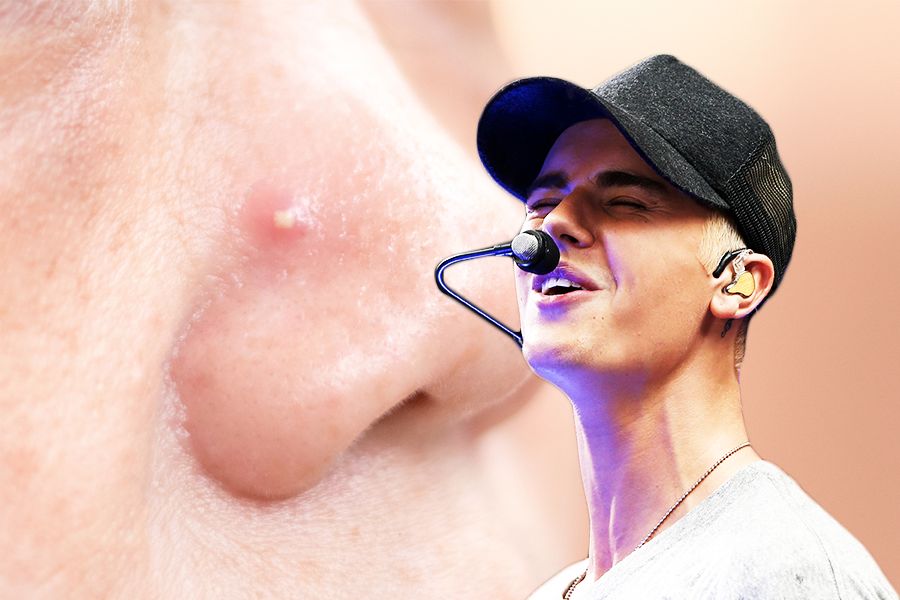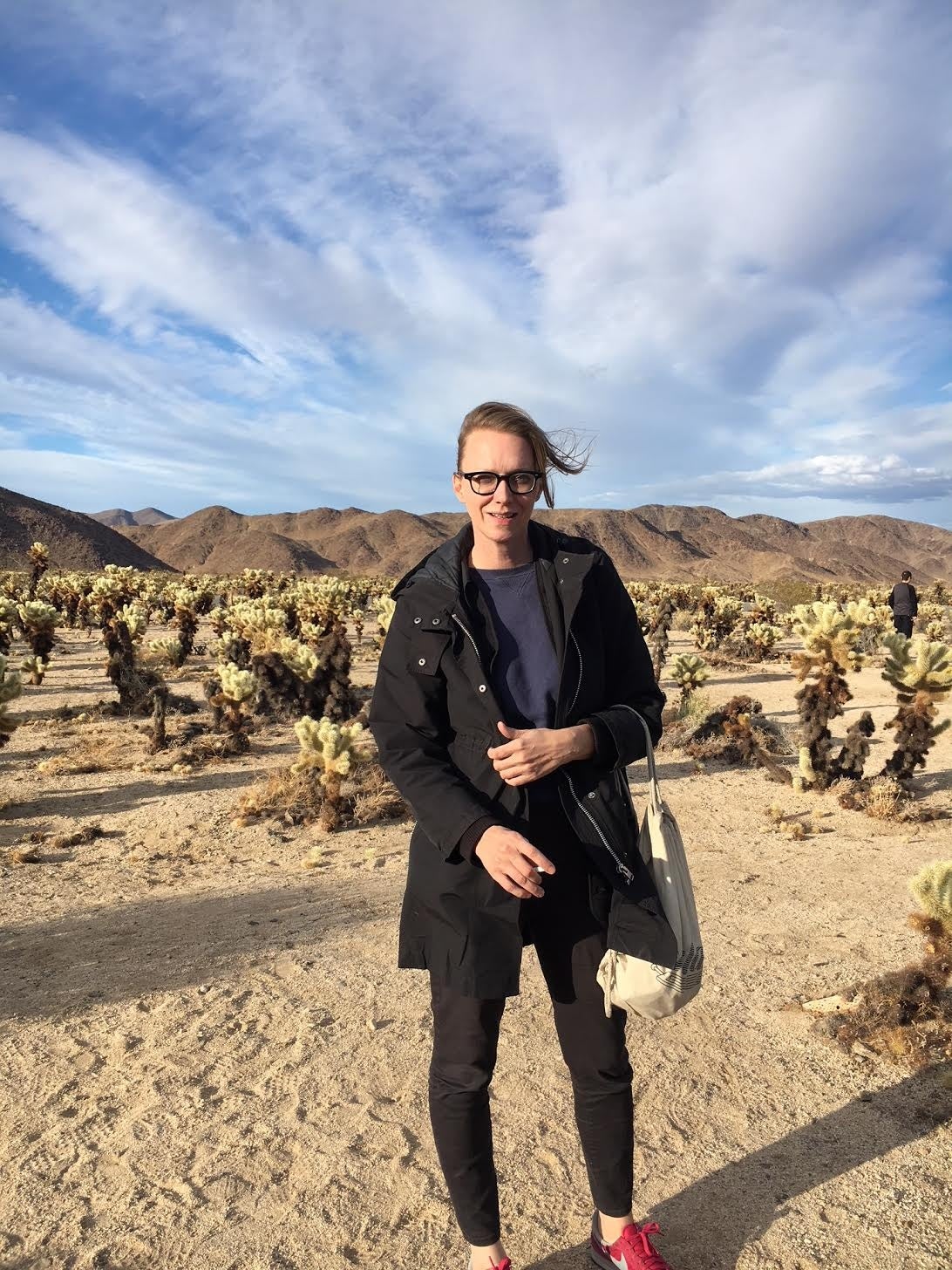Zits aren’t “cool” by nearly any metric for coolness, but Riverdale actress Lili Reinhart just made them seem that way. Reinhart posted a zit selfie on Instagram Stories in the manner of a faux Tinder profile. It read: “Tinder profile: Hi I’m Lili. I’m 21, a virgo, Cali-girl. And I have cystic acne. Hmu.”
It’s the latest in a wave of social media posts linked to #skinpositivity or #acnepositivity where people boldly submit makeup-free selfies that show pimples, pustules, scars and redness where filters, heavy makeup and carefully contoured profiles once masked imperfections, like it’s no big thing. The movement is also overwhelmingly female, aside from one standout male outlier — Justin Bieber, former Proactiv spokesperson — declaring recently in a selfie pointing to his own forehead blemishes that “Pimples are in.”
It’s an interesting admission, given that Bieber is a super rich celebrity who could wake up and have a completely new face surgically implanted every day of his life if he wanted, or at the very least, have an on-call dermatologist inject some cortisone into his zits and have them gone by lunchtime. It’s also interesting because he’s a dude. In this People roundup of 17 celebs who “celebrate their zits,” he’s the only guy.
Will other men follow suit? What does it mean for men to showcase acne “pride” in a world where they typically lack the socially approved real-world filters — aka makeup — that women have long been able to use to hide blemishes?
For some reason, knowing that Justin Bieber gets bad zits too, actually makes me feel better about myself.
— xxx (@vladimirvitaly) December 9, 2017
The #skinpositivity trend picked up in coverage the last few months, but has been unsurprisingly fueled by women, who face far greater societal expectations to wear makeup and appear flawless. It’s not that men don’t get acne — they do. Men are more likely to get acne as teenagers, and more likely to have severe, scarring acne. But women take the harder hit later, and are five times more likely to get adult acne, in part of because of hormones and menstruation, but some experts argue it’s because of the overuse of heavy anti-aging creams that block pores (all the makeup women wear can’t help).
Still, statistics don’t mean much when you have a giant zit on your face, male or female, and 95 percent of acne sufferers say it’s a mental health problem that lowers their confidence and even contributes to depression and self harm. Where it gets gendered is that women have long had a full bag of tricks to at least face the world with acne. Men? Not so much. Even though everyone hates getting zits, women are penalized more for imperfections, and men have more leeway to look how they look.
We’ve asked why it’s not “okay” for men to conceal their blemishes before, and their reasons are typically shame-based: Real men don’t wear makeup. Sometimes even the most sophisticated advice aimed at men on how to deal with flare-ups will take great pains to avoid any mention of makeup or cover-ups — it’s all about diet, clean faces, sunscreen, meds and/or topical treatments. In 2012, when a guy dared to tell a forum on Acne.org “I’m a guy and want to use concealer,” he got an earful, including someone who replied, “Bro do not do this! A lot of people can tell when guys are wearing makeup especially girls.”
That has slowly been changing, though. The male grooming market is booming, and that includes both skincare lines and makeup, mostly in the form of concealer. A 2017 GQ piece offers a complete guide to concealer for blemishes and spots as the perfect fix. There are a series of male-targeted products that specifically cover up blemishes — Tom Ford, Clinique, Calvin Klein, and something called the Men Pen all make concealer for men.
Men wearing makeup in general is far more accepted than it ever was. High school senior James Charles landed Cover Girl’s first-ever male ambassador spot in 2016, hawking mascara, and male beauty vloggers are a growing sector of the game.
But even mainstream efforts at courting less progressive men into the world of concealer show the continued discomfort men might have with concealing flaws, and the language they use in their advice to men who want to cover up pimples. This guide on Very Well on “How to Hide Pimples for Men” makes that clear. “Wearing makeup probably isn’t high on your to-do list,” they write. “But before you completely discount the idea, think about all the male celebrities, actors, sports commentators and news anchors who wear makeup every day.”
“No matter how many advances the ‘new man’ makes in redefining gender, those words will always feel painfully awkward for guys over the age of 30,” Ask Men writes, in a piece on makeup for men, then proceeds to explain how great concealer is. (For the record, it is great.) Contrast this with decades of woman-geared zit advice: here are one billion makeup products to slather on your face, stat, lest anyone gaze in horror upon thine zitty visage. Better to be caked in makeup than show your actual face.
All this is to say that men who would join an acne positivity movement may actually get to skip the step of having had to cover up their faces in the first place. Which is why it’s not surprising that acne positivity was spearheaded by a female beauty blogger, Em Ford, who pushed back against zit shame first. That happened in 2015 when she posted a video called “You Look Disgusting,” showing her acne-marked face, in response to the kinds of comments she’d get on her make-up free photos as part of showing her beauty routine. It’s now been viewed nearly 30 million times. Female celebs and influencers followed suit, with Kendall Jenner walking the red carpet for the Golden Globes with visible acne and bulletproof confidence.
never let that shit stop you! ?✨ https://t.co/uXlqwJxTPf
— Kendall (@KendallJenner) January 8, 2018
Since then, countless others have joined in, with models showing dramatic transformations of their bare faces versus heavily makeup-assisted ones:
As part of a woman’s movement, this pushback is easy to grasp, both gender-wise and timing-wise. Women have long felt enormous pressure to appear perfect, and social media has driven the quest for better products that make for better pictures. Forbes reported this year that skincare has become the biggest segment of the beauty industry, with projected sales of $130 billion by next year. Some of the most coveted items are from across the globe, with Korean beauty products in the clear lead, featuring exoticized ingredients like “snail mucin.”
What makes the acne positivity push interesting is that such obsessions are now and have always been predicated on one simple skin value: flawless, dewy, youthful, perfect skin — at any cost. This value was once considered part and parcel of the painful trappings of femininity, only now, it’s become a badge of self care in trying times. Gone is the pressure to find the one vaunted product or simple routine to take care of your skin troubles; Some of the Korean beauty routines involve elaborate steps and as many as 10 different products applied nightly in a specific order.
But unlike the male body positivity movement, men have remained largely invisible from the skin positivity movement. Aside from Bieber’s willingness to be photographed with acne, I was only able to find one other guy posting openly about his skin issues. Photographer Peter DeVito, a 20-year-old illustration student in New York, also posts unretouched, up-close images of his acne:
“I was really inspired because a lot of people on social media started posting things about body positivity and self-acceptance, but I felt like there was an absence of people with acne,” he told Elle of his photo series, which are often accompanied by the hashtag #acneisnormal.
His shots mostly feature women, but occasionally men:
His goals are the same as any woman posting about acne shame: to normalize the condition, to let people know that not only is it okay to have acne, but it can also be beautiful. “I’m hoping that people will just start to learn to accept themselves more and not compare themselves to what other people look like,” he told Elle.
But back to Bieber, who, for what it’s worth, is going to look better with acne than most people without it:
Some media responses have wondered if Bieber’s acne post (and earlier posts he made about having conjunctivitis) are his way of making some kind of comment about what it means to be a man today. “He is a millionaire with access to the best dermatologists and ophthalmologists in Hollywood, but at the end of the day, we’re all human,” they write.

